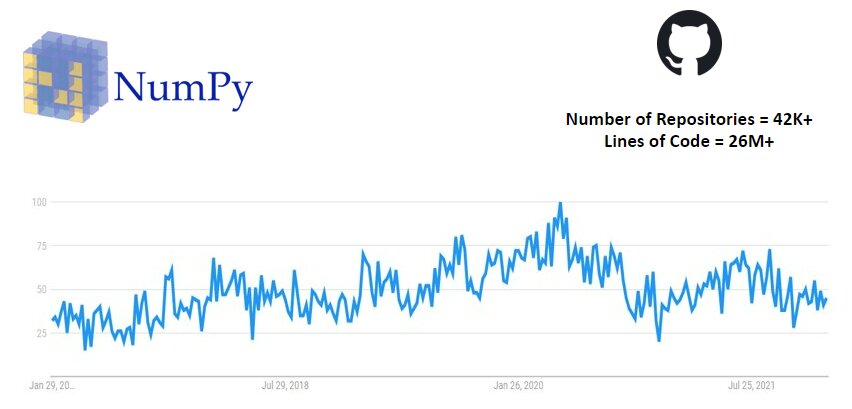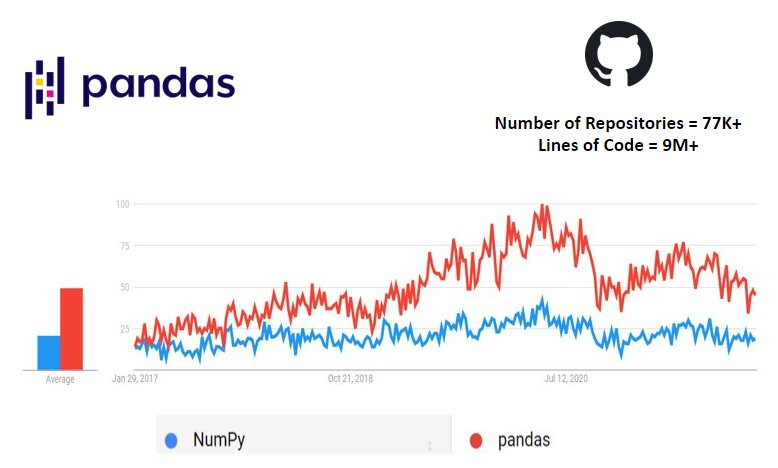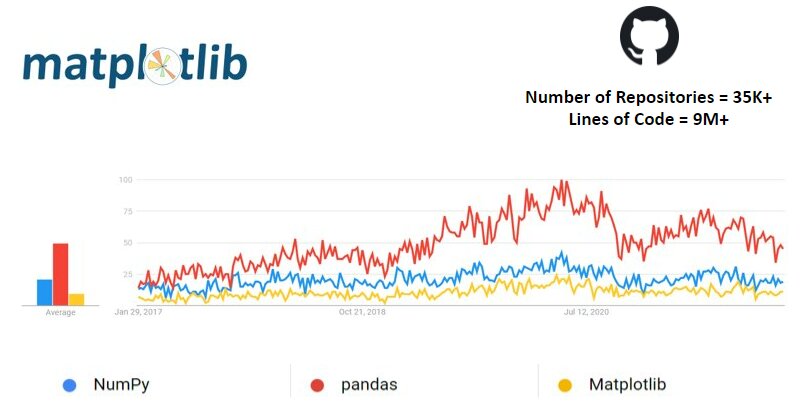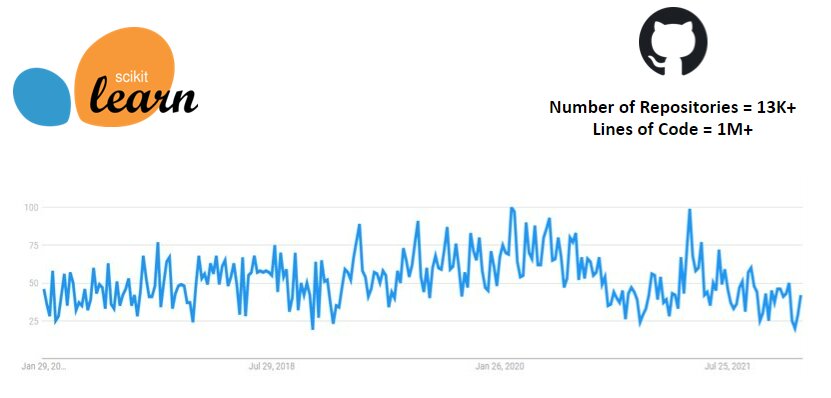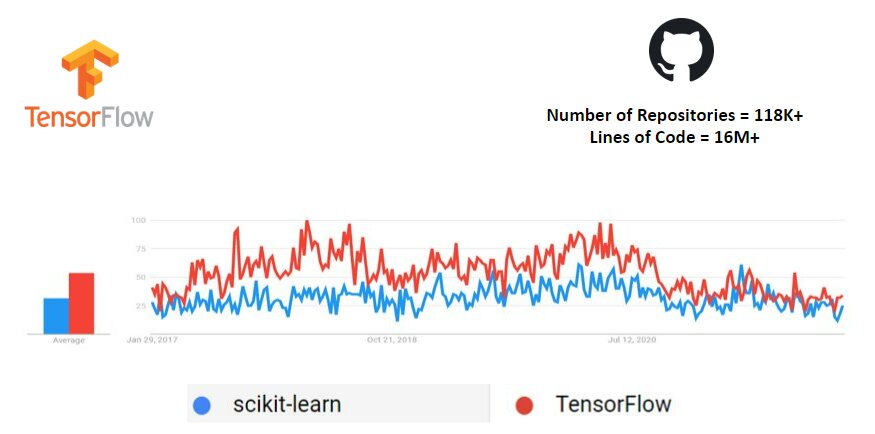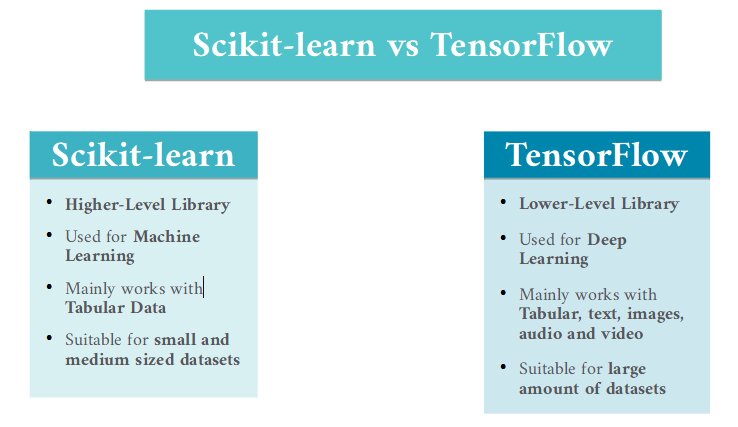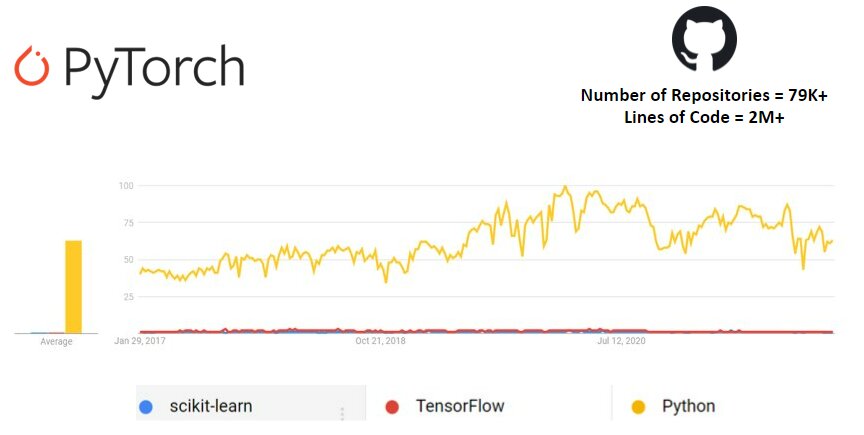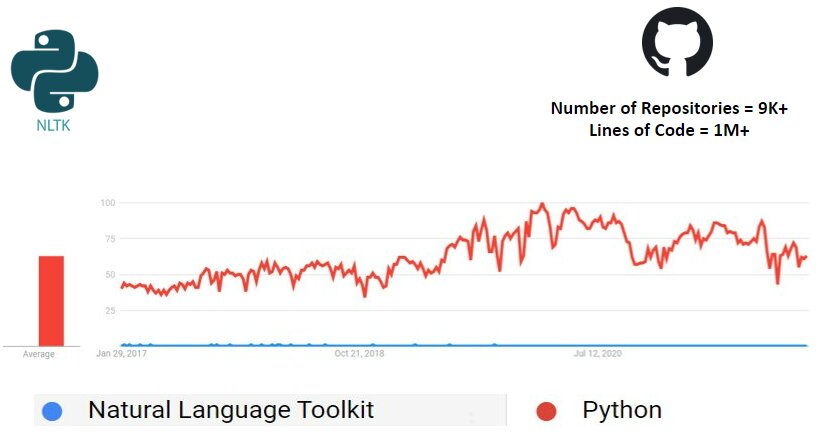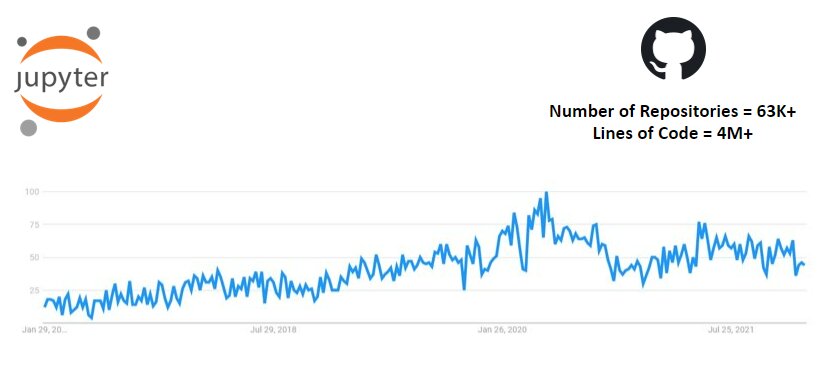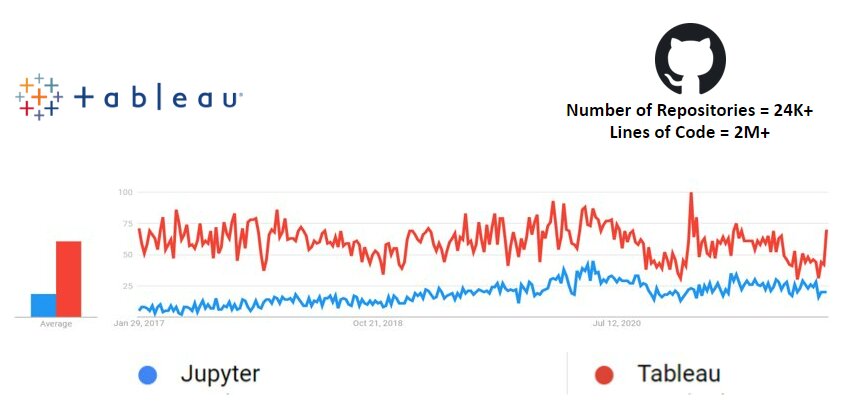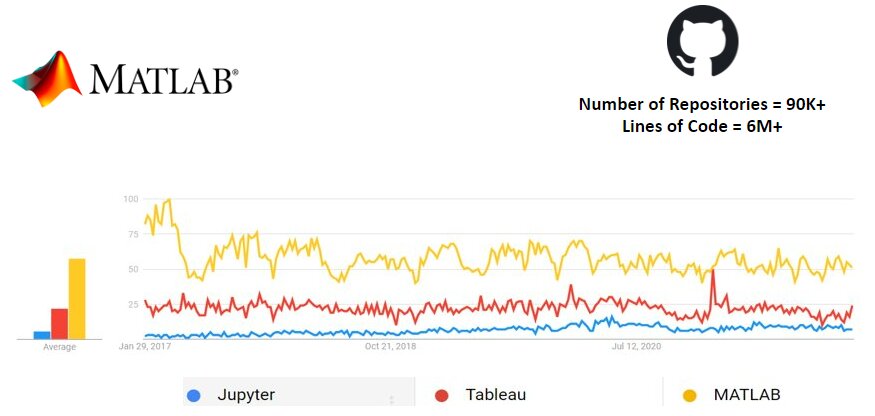Top 10 Machine Learning Tools Used By Data Scientists
Table of Content
Best-suited Machine Learning courses for you
Learn Machine Learning with these high-rated online courses
Introduction
In this article we will discuss the Top 10 Machine Learning Tools used by Data Scientists.
Machine Learning is the study of computer algorithms that can automatically learn and improve from the experience without being explicitly programmed
Machine learning algorithms are mainly classified into two categories:
- Supervised Learning
- Unsupervised Learning.
Supervised Learning:
- It uses the labeled data to train the model to classify the data or predict the outcomes accurately.
- Algorithms: Linear Regression, Logistic Regression, Decision Tree, Random Forest, AdaBoost, XgBoost.
- Example: Classify the spam in your inbox folder, and predict the house prices
Unsupervised Learning:
- It uses unsupervised algorithms to analyze and cluster the unlabeled dataset.
- These algorithms identify the hidden patterns and make the cluster to make the required conclusion.
- Algorithms: Principal Component Analysis, Singular Value Decomposition approaches.
- Example: Product and customer segmentation, Similarity Detection, and Recommendation System.
Must Check: Supervised vs Unsupervised
Must Check: What is Machine Learning?
Must Check: Machine Learning Online Courses & Certifications
Here, is the list of Top 10 Machine Learning tools used by Data Scientists:
Numpy:
About:
- Stands for Numerical Python
- Support for large and multi-dimensional array and matrices
- Python library but uses C/C++
Advantage:
- Much less memory is needed to store data
- Fast Performance
- Mathematical operations are easy to perform over
Real-Life Application of Numpy:
- Calculator
- Video Game
- Random Password Generator
- Statistical Analysis
Must Check: NumPy Interview Question
Pandas:
About:
- Data Analysis and Manipulation Tool
- Built on top of NumPy package
- Mainly works with the tabular data
Advantage:
- Data Representation
- Easy collaboration with other tools
- Efficiently handling Large Data
Real-Life Application of Pandas:
- Recommendation System (Netflix and Amazon)
- Neuroscience
- Predicting Stocks
- Natural Language Processing
Difference Between Pandas and NumPy
Must Check: Pandas Interview Question
Matplotlib
About:
- Data Visualization and Graphical Plotting Library
- Provides object-oriented API for embedding plots
- Open source and mostly written in Python
Advantage:
- Cross-Platform and Portable
- Integrated with LaTeX markup
- Customizable and Extensible
Real-life Application of Matplotlib:
- Neuroscience
- Stock Price Visualization
- Game development
Scikit Learn
About:
- Open Source Machine Learning library for Python
- Built on NumPy, SciPy, and Matplotlib
- Accessible and reusable
Advantage:
- Features various classification, regression, and clustering algorithms
- Models are trained and tested on the different datasets than one used for training data using train-test split
- Implements the non-neural net-based algorithm
Real-Life Application of Scikit learn:
- Predictive Analysis(JP Morgan, Booking.com)
- Spotify (recommendation)
- Automation(change.org)
- Evaluate and Improve Matchmaking System (Tinder, OkCupid)
Must Check: Scikit Learn Tutorial
Tensor Flow
About:
- End to end open-source machine learning library
- Developed by Google for internal research and production
- It has a collection of workflows with intuitive high-level API’s
Advantage:
- Easy model building
- Robust ML production anywhere
- Powerful experimentation for research
Real-Life Application of TensorFlow:
- Image Classification (VSCO)
- Face Detection Model (Modiface)
- Object Detection (Adidas)
Difference between Scikit Learn and TensorFlow
PyTorch
About:
- Open-source machine learning framework
- Based on Torch library
- Used in Computer Vision and Natural Language Processing
Advantage:
- Cloud Support
- Considered as NumPy extension of GPUs
- Easy to Debug and Understand
Real-Life Application of PyTorch:
- Image Recognition: Object Detection using YOLO V3
- Salesforce: Pushing the state of art in NLP and Multi-Tasking Learning
- Marketing(Airbnb uses Generative Adversal Network)
Difference between PyTorch and TensorFlow
NLTK
About:
- Stands for Natural Language Toolkit
- Used to work with human language data
- It contains libraries and programs for statistical language processing
Advantage:
- It fully supports the English language
- It consists of algorithms such as tokenizing, parts of speech, stemming, topic segmentation
- Efficient at analyzing large datasets
Real-Life Application of NLTK:
- Sentiment Analysis (Twitter)
- Question Answering (SQuAD, CoQA)
- Text Classification (Amazon, IMDB)
- Speech Recognition (Siri, Alexa)
Jupyter Notebook
About:
- Web-based interactive computing platform
- Allows to creation, share documents with interactive live codes
- Julia, Python, and R are supported by Jupyter
Advantage:
- Language Independent
- Training ML models
- Data Visualization
Real-Life Application of Jupyter:
- Google (Search Engine)
- O’Reilly (Recommendation System)
- NASA (Automating Image Analysis)
Tableau
About:
- Data visualization software focused on business intelligence
- Connects and extracts the data from an external source
- Tools can be used without any coding knowledge
Advantage:
- Provides beautiful dashboards and reports
- Automate Reporting
- Perform ETL(Explore, Transform and Load) operations quickly
Real-Life Application of Tableau:
- Customer Behavior Insight(Sysco Labs)
- Sales Prediction (Specialized)
- Deployment Strategy(Red Hat)
Must Check: What is Tableau?
Must Check: Tableau Online Courses & Certifications
MATLAB
About
- Stands for Matrix Laboratory
- Programming and Numeric Computing Platform
- The basic data element is Matrix
Advantage:
- Debug easily
- Keep track of files and variables
- Provides tools to develop GUI based applications
Real-Life Application of MATLAB:
- Analyze and Design Antenna
- Face Detection
- Simulate an Artificial Neural Network
Conclusion:
These are the top 10 Machine Learning tools used by Data scientists to check out in 2022 before starting your machine learning journey. These tools can make your learning and transition into data science smooth.
————————————————————————————————————–
If you have recently completed a professional course/certification, click here to submit a review.
Frequently Ask Question
Q1. What are the different machine learning tools that are used by Data Scientist?
A1. Data Scientist use tools like NumPy, Pandas, MATLAB, Matplotlib, NLTK, PyTorch, Scikit Learn, Tableau and Tensor Flow and Jupyter Notebook.
Q2. What are the four different types of data that can be used in machine learning?
A2. Numerical, Categorical, time-series and text data are mostly used in the machine learning.
Q3. Do Data Scientist use Tableau?
A3. Tableau is a visual analytics platform transforming the way we use the data to solve problems empowering people and organizations to make most of their data. It is the fastest growing, powerful and most popular data visualization and business intelligence tool that allow us to analyze trends visually and take quick decision
FAQs
What are the different machine learning tools that are used by Data Scientist?
Data Scientist use tools like NumPy, Pandas, MATLAB, Matplotlib, NLTK, PyTorch, Scikit Learn, Tableau and Tensor Flow and Jupyter Notebook.
What are the four different types of data that can be used in machine learning?
Numerical, Categorical, time-series and text data are mostly used in the machine learning.
Do Data Scientist use Tableau.
Tableau is a visual analytics platform transforming the way we use the data to solve problems empowering people and organizations to make most of their data. It is the fastest growing, powerful and most popular data visualization and business intelligence tool that allow us to analyze trends visually and take quick decision



